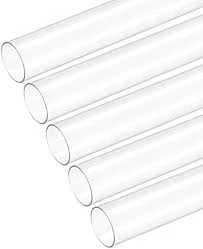Aug . 14, 2024 03:36 Back to list
Exploring the Uses and Benefits of HDPE Pipes and Fittings in Various Applications
Understanding HDPE Pipes and Fittings A Comprehensive Guide
High-Density Polyethylene (HDPE) pipes and fittings have gained significant popularity across various industries due to their remarkable strength, durability, and versatility. As environmental concerns rise and infrastructure needs expand, HDPE presents a modern solution for a wide array of applications, ranging from water supply systems to industrial processes.
One of the key advantages of HDPE pipes is their resistance to corrosion and chemical reactions. Unlike metal pipes, HDPE does not rust or corrode, making it an excellent choice for transporting chemically aggressive fluids. This characteristic also translates into reduced maintenance costs over the lifespan of the pipes. Additionally, HDPE is resistant to UV radiation, which allows it to maintain structural integrity when exposed to sunlight, further increasing its utility for outdoor applications.
Understanding HDPE Pipes and Fittings A Comprehensive Guide
The lifespan of HDPE pipes is another compelling factor. With proper installation and care, these pipes can last for over 50 years, significantly longer than traditional materials like PVC or metal. This longevity not only ensures a reliable water supply or fluid transport system but also contributes to sustainability by reducing the need for frequent replacements and minimizing waste.
hdpe pipes and fittings

HDPE pipes are also highly efficient in terms of hydraulic properties. They have a smooth internal surface, which reduces friction and allows for a higher flow rate compared to other types of pipes. This quality makes HDPE particularly suitable for high-flow applications, such as irrigation systems, sewage systems, and industrial water supply.
In terms of fittings, HDPE offers a versatile range of options, including elbows, tees, reducers, and caps. These fittings are engineered to create strong, leak-proof joints through various methods such as butt fusion, electrofusion, and mechanical joining. These connections ensure that the system remains watertight and that the structural integrity is maintained throughout the piping network.
The flexibility of HDPE fittings allows for easier installation in tight spaces or complex layouts, which is often a challenge in urban environments. Additionally, the ability to create intricate configurations enhances the adaptability of HDPE systems for different project requirements.
As environmental sustainability becomes a pressing issue worldwide, HDPE pipes stand out as an eco-friendly option. Made from recyclable materials, they can be repurposed at the end of their lifespan, further reducing environmental impact. Many manufacturers are also committed to using recycled HDPE, contributing to a circular economy that promotes sustainability.
In conclusion, HDPE pipes and fittings provide a robust, flexible, and long-lasting solution for a multitude of applications. Their resistance to corrosion and chemicals, coupled with their lightweight nature and ease of installation, make them ideal for modern infrastructure needs. With the added benefits of superior flow characteristics and sustainability, it's no wonder that HDPE technology continues to be increasingly adopted in various industries around the globe. Whether for municipal water supply, irrigation, or industrial use, investing in HDPE pipes and fittings is a decision that offers both immediate and long-term advantages.
-
Durable PVC Pipe Fittings for Plumbing & Irrigation Needs
NewsAug.18,2025
-
HDPE Steel Belt Reinforced Spiral Corrugated Pipe | High Strength
NewsAug.17,2025
-
HDPE Pipe Fittings: Durable, Leak-Proof Solutions
NewsAug.16,2025
-
Premium CPVC Sheet: High-Temp & Chemical Resistant Solutions
NewsAug.15,2025
-
Durable PPR Pipe for Hot & Cold Water Systems - Easy Install
NewsAug.14,2025
-
Durable HDPE Sheet | Versatile & Impact-Resistant Plastic
NewsAug.13,2025

